HOME >> METRO SHANGHAI
The Battle of Shanghai: THEN & NOW
Source:Global Times Published: 2015-8-9 17:18:01
Beyond the city’s glitzy façade remain the visible scars of China’s War of Resistance against Japanese Aggression
The Battle of Shanghai in 1937 was the very first - and decidedly the most horrific - of the 22 major campaigns fought between China's National Revolutionary Army and the Imperial Japanese Army during the War of Resistance against Japanese Aggression (1937-45). Starting on Friday, August 13, 1937, the bloody battle is notable for disillusioning and demoralizing invading Japanese forces who arrogantly assumed they could quickly conquer all of China after taking Shanghai. Fought in the downtown areas of Shanghai as well as in strategic outlying suburbs, the engagement, was an admirable showing for outgunned Chinese forces, who put up a history-making fight against unrelenting air, naval and ground assaults by the Japanese. A total of 290,000 casualties were suffered by both sides, and even though the Japanese Army eventually won the three-month battle, China won the war. September 3 of this year marks the 70th anniversary of the victory in the Chinese People's War of Resistance Against Japanese Aggression, and while today's Shanghai is a prosperous, neon-lit metropolis with an economic output that rivals all of Japan, the scars of war are still visible around the city. From preserved memorials to decaying landmarks, let's follow the camera on a visual tour to revisit some important sites from this dark time in the city's history.
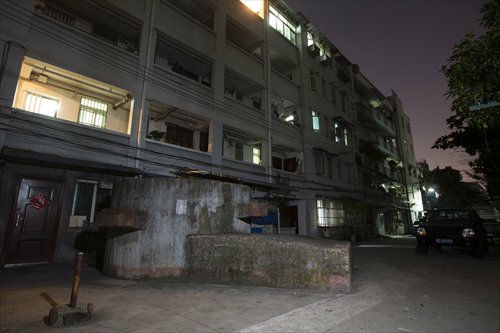
This bunker, located in front of building number 50 at Fengcheng No.3 community in Yangpu district, is said to be where Chinese soldiers held off incursion of Japanese tanks. Today, it is a place for local children to play war, unaware that a real war with real blood and bodies was once fought here. Residents, not wishing to be reminded of this, regard the old bunker as an eyesore and have petitioned for its removal.
Behind 167 Qingyun Road in Hongkou district, there is a deserted, weed-covered fortress where, according to residents, Chinese garrisons sniped at approaching Japanese troops.
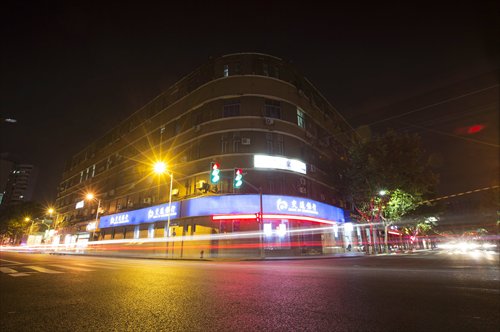
This commercial building standing at 1 East Jiangwan Road in Hongkou district is currently being used as a bank, though ironically it was once the headquarters for the invading Japanese Special Naval Landing Forces.
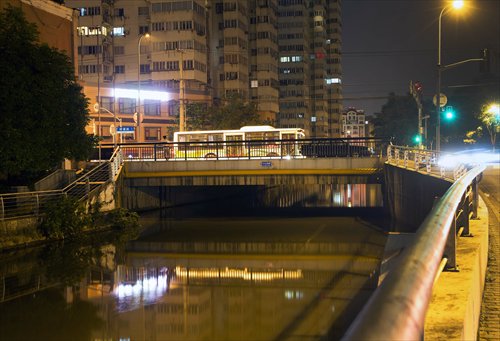
At the juncture of Liuying, Tongxin and Shuidian roads, between Hongkou and Zhabei districts, lies a seemingly ordinary bridge spanning a small creek by the name of Bazi Bridge. Two major conflicts - the January 28 Incident of 1932 and the August 13 Incident of 1937 - both broke out at this important location. It is said to be where the very first shots of the War of Resistance were fired, with the 60-foot-long bridge being a strategically critical entry point for the Japanese's advancement into Shanghai. A reporter in 1937 described this very area as a pile of ruins, dust and burnt earth following the second incident.
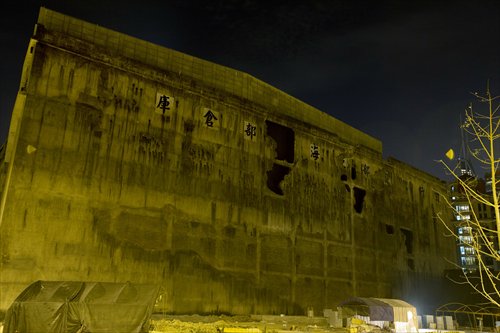
Sihang Warehouse, located at the north-south corner of Xizang Road Bridge on the northern shore of Suzhou Creek in southern Zhabei district, was the last stronghold of China's National Revolutionary Army, with only 410 soldiers from the auspiciously numbered 88th Division left to fight against tens of thousands of Japanese forces. They covered the main forces retreating west. The successful defense of this location is considered the beginning of the end of the Battle of Shanghai, and today is under complete restoration - including re-exposing the 8 mortar shell holes and 430 bullet holes - as a heritage landmark.
Garden Bridge, also known as Waibaidu Bridge, is the most well-known bridge in Shanghai.
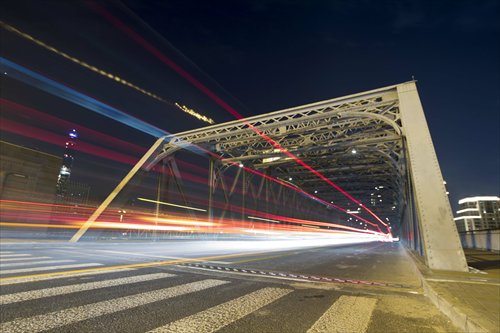
Located along Suzhou Creek, it was used throughout the War of Resistence to connect Japanese-occupied areas of Shanghai with unoccupied foreign concessions, with millions of innocent Chinese citizens attempting to cross the bridge at the start of the Battle of Shanghai.
First opened in 1908, today this all-steel structure is considered a protected heritage architecture that has carried several generations of struggles, tears, glories and dreams.
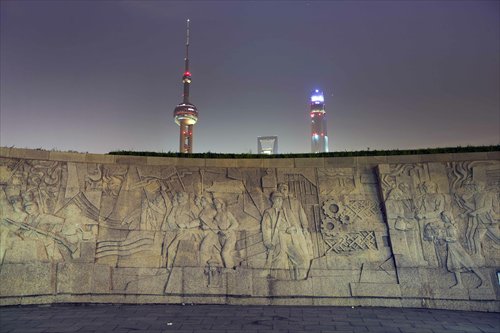
Our visual tour concludes at the Monument to the People's Heroes, located at the confluence of Suzhou Creek and the Huangpu River along the Bund.
Open to the public for free from 6 am to 12 midnight everyday, this concrete memorial was completed in 1994 in honor of the heroic figures who gave their lives to the nation during the wars between Opium War and the establishment of the People's Republic of China.
The 60-meter-tall memorial is built on a base of 56 meters in diameter, which is supported by more than 500 pieces of reinforced concrete piles.
Global Times - Wang Jiangang contributed to this story

Fengcheng No.3 community bunker Photo: Yang Hui/GT
This bunker, located in front of building number 50 at Fengcheng No.3 community in Yangpu district, is said to be where Chinese soldiers held off incursion of Japanese tanks. Today, it is a place for local children to play war, unaware that a real war with real blood and bodies was once fought here. Residents, not wishing to be reminded of this, regard the old bunker as an eyesore and have petitioned for its removal.
Behind 167 Qingyun Road in Hongkou district, there is a deserted, weed-covered fortress where, according to residents, Chinese garrisons sniped at approaching Japanese troops.

Japanese Special Naval Landing Forces headquarters Photo: Yang Hui/GT
This commercial building standing at 1 East Jiangwan Road in Hongkou district is currently being used as a bank, though ironically it was once the headquarters for the invading Japanese Special Naval Landing Forces.

Bazi Bridge Photo: Yang Hui/GT
At the juncture of Liuying, Tongxin and Shuidian roads, between Hongkou and Zhabei districts, lies a seemingly ordinary bridge spanning a small creek by the name of Bazi Bridge. Two major conflicts - the January 28 Incident of 1932 and the August 13 Incident of 1937 - both broke out at this important location. It is said to be where the very first shots of the War of Resistance were fired, with the 60-foot-long bridge being a strategically critical entry point for the Japanese's advancement into Shanghai. A reporter in 1937 described this very area as a pile of ruins, dust and burnt earth following the second incident.

Sihang Warehouse Photo: Yang Hui/GT
Sihang Warehouse, located at the north-south corner of Xizang Road Bridge on the northern shore of Suzhou Creek in southern Zhabei district, was the last stronghold of China's National Revolutionary Army, with only 410 soldiers from the auspiciously numbered 88th Division left to fight against tens of thousands of Japanese forces. They covered the main forces retreating west. The successful defense of this location is considered the beginning of the end of the Battle of Shanghai, and today is under complete restoration - including re-exposing the 8 mortar shell holes and 430 bullet holes - as a heritage landmark.
Garden Bridge, also known as Waibaidu Bridge, is the most well-known bridge in Shanghai.

Waibaidu Bridge Photo: Yang Hui/GT
Located along Suzhou Creek, it was used throughout the War of Resistence to connect Japanese-occupied areas of Shanghai with unoccupied foreign concessions, with millions of innocent Chinese citizens attempting to cross the bridge at the start of the Battle of Shanghai.
First opened in 1908, today this all-steel structure is considered a protected heritage architecture that has carried several generations of struggles, tears, glories and dreams.

Monument to the People's Heroes Photo: Yang Hui/GT
Our visual tour concludes at the Monument to the People's Heroes, located at the confluence of Suzhou Creek and the Huangpu River along the Bund.
Open to the public for free from 6 am to 12 midnight everyday, this concrete memorial was completed in 1994 in honor of the heroic figures who gave their lives to the nation during the wars between Opium War and the establishment of the People's Republic of China.
The 60-meter-tall memorial is built on a base of 56 meters in diameter, which is supported by more than 500 pieces of reinforced concrete piles.
Global Times - Wang Jiangang contributed to this story
Posted in: Metro Shanghai, City Panorama